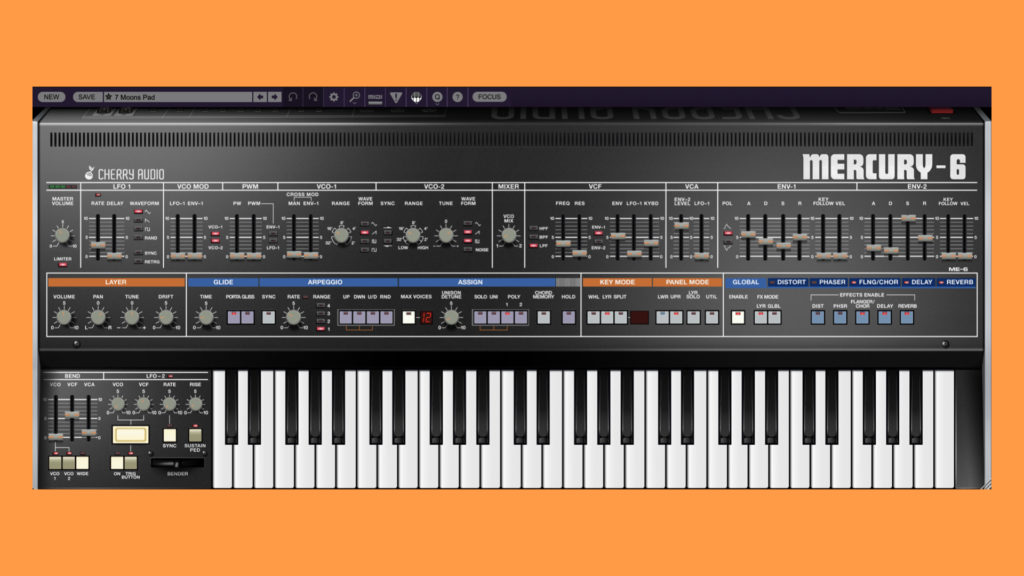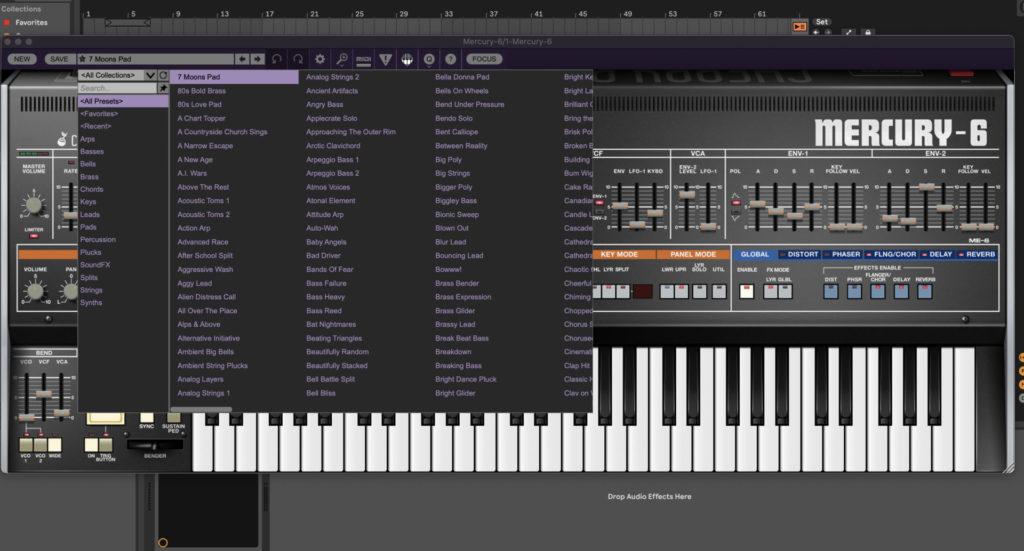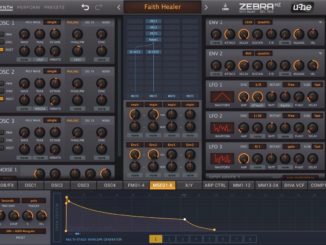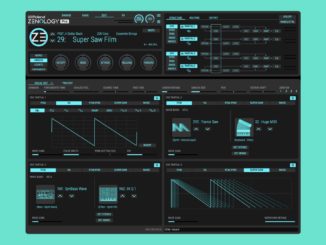Cherry Audio Mercury-6 is an authentic emulation of the legendary Roland Jupiter-6 analog polyphonic Synthesizer with extra goodies.
During Superbooth 21, Cherry Audio released the Mercury-4, an authentic emulation of the Roland Jupiter-4 analog Synthesizer. A green light came from the music production scene. It sounds great, has character, and, according to many, it also sounds authentically like the original. Since I don’t have a Jupiter-4 for comparisons, I don’t have an opinion on this.
It was expected that after the 2021 release, Cherry Audio would fly to other Jupiters. With the Mercury-6, the cherries unveiled another modeled synth from the Jupiter family. It is the Jupiter-6, with all its unique features and modern extras that are only available in the CA plugin. And it’s the first Jupiter-6 emulation, or am I wrong?
Press Release
Cherry Audio’s Mercury-6 is a meticulous recreation of the Jupiter-6 analog polyphonic synthesizer, initially released in 1983. Released after the flagship eight-voice Jupiter-8 as a more affordable alternative, the six-voice Jupiter-6 has become one of the most coveted classic Roland analog polysynths. Though similar in appearance and feature set, the Jupiter-6 sounded considerably different from the Jupiter-8.
Most significantly, the Jupiter-6 featured a true multimode filter with lowpass, highpass, and bandpass modes. This filter design had a more aggressive sound than the previous Jupiters, making the Jupiter-6 a natural for cutting-edge techno and electro styles. It was also notable for being one of the first synthesizers to implement and demonstrate the MIDI protocol and one of the first analog polys with a split keyboard mode.
As is traditional for Cherry Audio, Mercury-6 maintains the distinctive features and sonic character of the classic that inspired it and adds even more for today’s music production environment. We’ve expanded the split mode and added a second layer capable of huge, stacked sounds.
And with polyphony extended to 16 notes, Mercury-6 won’t easily run out of voices like the original. We’ve also introduced a flexible integrated effects panel, extended the LFO functionality, and loaded it with over 500 expertly designed sound presets.
For those who have long pined for the quintessential Jupiter-6 experience, Mercury-6 will be a welcome addition to Cherry Audio’s extensive catalog of synthesizer classics!
Key Features
- Highly optimized, massive dual-layer voicing architecture with 16 polyphonic voices per layer. Keyboard split or stacked layer modes allow dual simultaneously playable layers, with separate per-layer controls for all parameters, including effects.
- Two VCOs per voice with combined waveform capabilities: triangle, ramp sawtooth, noise, and square or variable pulse
- Multimode filter with a 24 dB/oct lowpass, 24 dB/oct highpass, or 12 dB/oct bandpass modes
- Accurate reproduction of the original’s advanced VCO-2 to VCO-1 FM cross-modulation for searing tones
- Precisely implemented portamento and glissando modes
- Exactingly replicated arpeggio section with tempo sync and the hidden up/down modes of the original
- Monophonic Unison Solo and powerful polyphonic Unison Share mode for fat, stacked sounds
- Two tempo-syncable LFOs with extended retrigger functionality
- Per-layer drift control for oscillators and filter frequencies for authentic analog character
- Single-key chord memory mode
- Over 500 presets, created by a talented team of sound design veterans, easily accessible in a convenient preset browser
- Panel Control for selecting layer controls, including extensive utility functions for duplicating and exchanging synthesis and effects parameters between layers and presets.
- Studio-quality integrated effects: distortion, 4/8/12 stage phaser, flanger/chorus, three types of delay with sync, and four types of reverb, with easy-to-access global or layer settings.
- Complete MIDI control and DAW automation for all controls, with easy-to-use MIDI learn and mapping (Preset and Global)
- Cherry Audio’s popular Focus zoom-in feature, as well as standard UI zoom and resize via drag
- Complete documentation available directly online from the instrument or in downloadable PDF format
- Highly optimized coding for optimal performance with ultra-low CPU load
- Highly optimized multithreaded processing for presets using Dual and Split Layer modes
- User-adjustable oversampling control
First Impression
CA kindly sent me a pre-release version. At first glance, it’s another impressive emulation of a Roland classic. The presets are fun and show off what Cherry’s Jupiter-6 emulation is capable of. I can’t say anything about the exact authenticity because I don’t have a Jupiter-6. Neither do I have the money to buy and service one. You get a great-sounding synth plugin which is on the legend trail of the Jupiter-6.
Cherry Audio Mercury-6 is available now for an introductory price of $49 USD (MSRP $69) and run as a VST, VST3, AU, and AAX plugin and standalone formats on macOS (Intel + native Apple Silicon) and Windows. A free 30-day demo is available on the official website. If you buy at Plugin Boutique, you are not only supporting the Synth Anatomy activity but also get a free plugin on top.
More information here: Cherry Audio
Available at my partner






I notice all the usual “synthfluencers” happy to whore it up for this one. For some reason software clones are 100% fine, but hardware clones are somehow outrageous.
No problem with hardware clones when they are vintage and longtime not available. Most people have problems with clones of products still in production by the original designer like the Swing (Arturia Keystep). Software has never been a problem because software remains software and hardware remains hardware. Two different user groups and hard to compare. It would hurt if a company would clone a software 1-to-1 like Serum to Berum or so.
I do like CA products. I own several. I tried the Demo this morning. It was good but I felt that so much of its repotoire could be accomplished by the Memorymoog and Juno emulations of theirs that I could not justify even the very reasonable price.